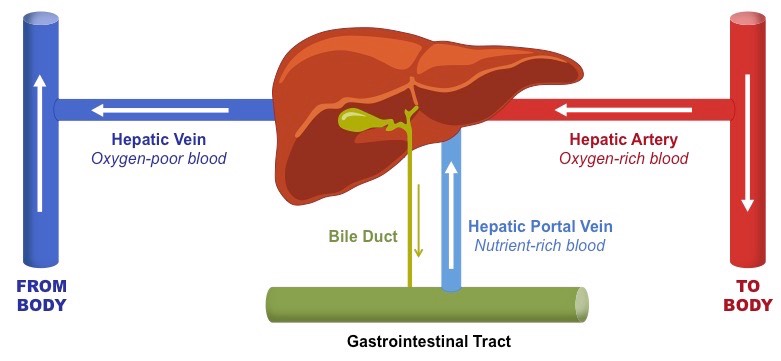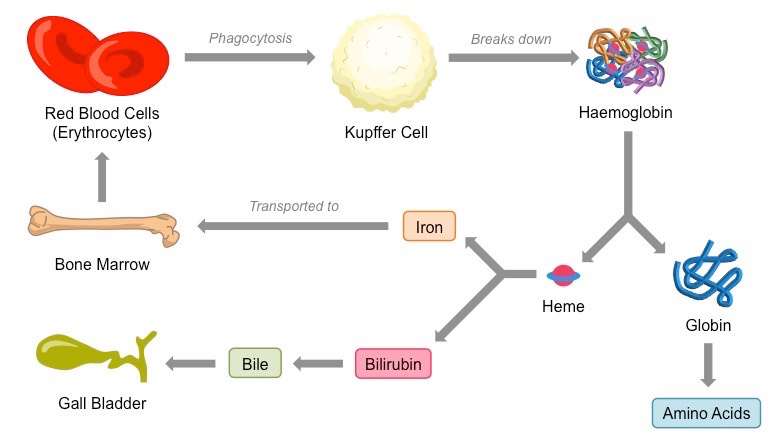
肝功能和红细胞再生


In humans, red blood cells possess minimal organelles and no nucleus in order
to carry more haemoglobin
Consequently, red blood cells have a short lifespan (~120 days) and must be
constantly replaced
The liver is responsible for the break down of red blood cells and recycling of
its components
These components are used to make either new red blood cells or other important
compounds (e.g. bile)
Understanding:
• The breakdown of erythrocytes starts with phagocytosis of red blood cells by
Kupffer cells
• Iron is carried to the bone marrow to produce haemoglobin in new red blood
cells
Kupffer cells are specialised phagocytes within the liver which engulf red blood
cells and break them down
Kupffer cells break down haemoglobin into globin and iron-containing heme groups
Globin is digested by peptidases to produce amino acids (which are either
recycled or metabolised by the liver)
Heme groups are broken down into iron and bilirubin (bile pigment)
The released iron must be complexed within a protein in order to avoid oxidation
to a ferric state
Iron can be stored by the liver within a protein shell of ferritin
Iron can be transported to the bone marrow (where new haemoglobin is produced)
within the protein transferrin
The liver is a lobed organ located below the diaphragm that functions to
regulate the chemical composition of blood
It receives oxygenated blood via the hepatic artery, which is used to sustain
liver cells (hepatocytes)
It also receives nutrient rich blood from the gut via the portal vein
Deoxygenated blood is transported from the liver via the hepatic vein
The liver functions to process the nutrients absorbed from the gut and hence
regulates the body’s metabolic processes
It is responsible for the storage and controlled release of key nutrients (e.g.
glycogen, cholesterol, triglycerides)
It is responsible for the detoxification of potentially harmful ingested
substances (e.g. amino acids, medications, alcohol)
It produces plasma proteins that function to maintain sustainable osmotic
conditions within the bloodstream
It is responsible for the breakdown of red blood cells and the production of
bile salts
Liver Blood Flow | BioNinja
https://ib.bioninja.com.au/options/option-d-human-physiology/d3-functions-of-the-liver/liver-blood-flow.html
Erythrocyte Recycling | BioNinja
https://ib.bioninja.com.au/options/option-d-human-physiology/d3-functions-of-the-liver/erythrocyte-recycling.html